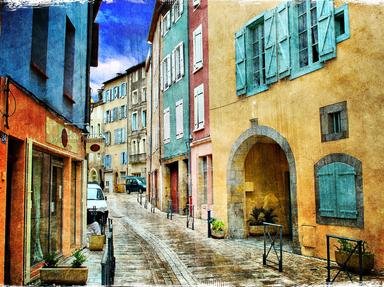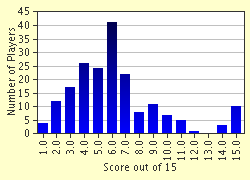Quiz Answer Key and Fun Facts
1. Painter-monk Fra Filippo Lippi (1406-69) is said to have broken his vows in spectacular fashion. What did he do?
2. Renaissance artist Piero di Cosimo (1462-1521?) ate a limited diet. On what food did he reportedly subsist for weeks at a time?
3. 16th-century Florentine Mannerist Jacopo Pontormo (1494-1557) had unusual living arrangements. What were they?
4. Bolognese Baroque artist Guido Reni (1575-1642) suffered from an unfortunate addiction. What was it?
5. It is well known that Artemisia Gentileschi (1593-1653), the foremost female painter of the Italian Baroque, was raped in her teens, leading to a famous trial in 1612. But what was the name of her rapist?
6. Sometime in the second decade of the 17th century, a young Frenchman, surnamed Gellée, was hired as a member of an artist's domestic staff. His employer quickly perceived that he had potential as a painter. In what capacity did Gellée serve the household?
7. Naples-born Baroque painter Salvator Rosa (1615-1673) led a colorful life. What did he do when he was a teenager?
8. Rembrandt's brilliant student Carel Fabritius (1622-1654) died young in a disaster. What was it?
9. Swiss artist Angelica Kauffmann (1741-1807) married a man who turned out to be a fraud. What had he claimed to be?
10. American artist Charles Willson Peale (1741-1827) held a dinner party in an unusual venue. Where did this meal take place?
11. When Elizabeth Siddal, wife, model, and muse of painter-poet Dante Gabriel Rossetti died young, Rossetti made a gesture of romantic despair. What was it?
12. Among the many prominent people who died in the sinking of the Titanic, on the morning of April 15, 1912, was an artist -- and it wasn't Leonardo DiCaprio. Who was it?
13. French painter Paul Gauguin (1848-1903) gave up his first career, abandoned his wife and children, and ended up in the South Seas. What had Gauguin been doing for a living?
14. More than one significant artist has perished on a battlefield. In what battle of World War I did German painter Franz Marc (1880-1916) meet his death?
15. Cuban-American artist Ana Mendieta (1948-1985) died in suspicious circumstances. What killed her?
Source: Author
lanfranco
This quiz was reviewed by FunTrivia editor
bloomsby before going online.
Any errors found in FunTrivia content are routinely corrected through our feedback system.

